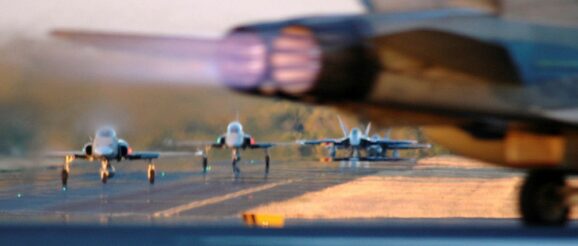Accelerating defence technology and innovation across Australia’s north | The Strategist

The strategic importance of northern Australia was highlighted in the defence strategic review, with $3.8 billion committed to upgrade military installations across the north over the next four years. Defence Minister Richard Marles, who travelled to Darwin in April for the announcement, said the funding was an ‘immediate investment’ in northern Australia’s defence infrastructure.
While these bases and facilities are primarily for the use of the Australian Defence Force and the defence of Australia, they are also critical enablers for our allies and partners in the Indo-Pacific. This is especially true for the US military, whose presence in the north dates back almost a century.
The north occupies a geographical sweet spot in the Indo-Pacific, offering easy access and rapid force deployment to the western Pacific and eastern Indian Oceans. Darwin, for example, is close to potential conflict hot spots in the Malacca Strait and contested South China Sea. The US bases in Guam and Hawaii are much further away.
This provides Australia and its partners with a launching point for an inside force that can react to aggression and not have to fight its way into the conflict. With ample strategic depth, northern Australia is a much safer place to operate from than small island bases where dispersal of defence assets is virtually impossible. The Top End is beyond the range of most Chinese missiles and strike aircraft but close enough to have an influence on Chinese actions in the region.
In addition to providing a strategic buffer for the nation, Western Australia, the Northern Territory and Queensland derive obvious economic benefits from defence investment.
Western Australia’s defence industry is estimated to contribute around $3 billion a year to the state’s economy. That figure is expected to double within the next decade. Queensland’s defence industries employ more than 6,500 people, generated an estimated $6.3 billion in revenue in 2015–16 and secured $4.3 billion in Australian defence contract payments in 2016–17. Defence spending in the Northern Territory reached $2.2 billion in 2021–22.
However, the amount of infrastructure needed in the north is finite, so this large investment ‘sugar hit’ will eventually taper off. All three jurisdictions need to start planning for that now and building an industrial base that will help avoid a ‘valley of death’.
The US has a crucial role to play in fostering defence industrial cooperation among allied nations, particularly in the Indo-Pacific region. Such collaboration is essential for several reasons, including cost-effectiveness, interoperability, technological advancement and collective security.
This theme was the subject of a groundbreaking report by George Mason University’s Jerry McGinn and Michael T. Roche titled A ‘build allied’ approach to increase industrial base capacity. The authors argue that developing an effective ‘build allied’ approach will help the US military create surge capacity, with both speed and scale, and develop industrial resilience in support of the US national defence strategy’s objectives.
A defence industry accelerator is a program or organisation that supports the growth of early-stage companies that are developing innovative technologies for defence and national security applications. They typically provide funding, mentorship, resources and networking opportunities to help start-ups grow and succeed. By bringing these parties together, an accelerator can help to facilitate collaboration and information-sharing, which can lead to the development of more effective solutions to complex security challenges.
But that is no easy task.
For some time now, the International Security Industry Council of Japan, the Pacific Impact Zone and the Technology Accelerator have been working to develop an ‘allied nations defence industrial base accelerator’ platform, or DIBX. They are all non-for-profit organisations composed of former senior government, industry and civil-society members from the US, Japan, the UK, Australia, India and NATO countries.
The DIBX will be supported by US defence funding and engage allied nations with a shared strategic interest in promoting a free and open Indo-Pacific. The US–Australia–Japan trilateral strategic relationship is a logical one to explore, especially in the areas of hypersonic and long-range strike capabilities, artificial intelligence, quantum computing, and other critical and emerging technologies—all of which will be exercised, tested, evaluated and (could be) built and maintained in the north.
The DIBX can provide valuable benefits to northern Australian governments’ defence industrial build-up plans and support elements of the second pillar of AUKUS, which focuses on advanced capabilities. The DIBX is finalising an industry guide with a dedicated northern Australia section. It will be outlined at the Developing Northern Australia conference in Darwin next week.
